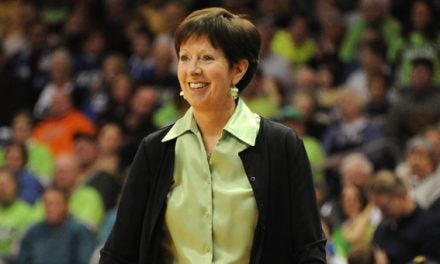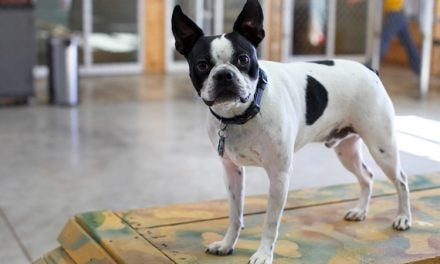Where polished wood lanes once stood one right after the other, and the familiar sound of crashing pins could be heard night after night, an oval track has taken its place.
From within the remodeled bowling alley, the whirring of wheels across concrete fills the air alongside cheers from a dynamic group of women, known as the South Bend Roller Girls, set on making a name for themselves in the female-dominated world of roller derby.
When many people hear the term “roller derby,” they can’t help but think of the theatrical performances of women on roller skates wearing tutus and fishnet stockings. Although this flashiness is where the sport got its start in the 1960s, that’s no longer the case. As a result of a revival that began in Austin, Texas in 2001, roller derby has evolved into a competitive sport with a larger focus on athleticism — and a bit of face paint every now and again.
The beginning
It was a simple post on social media that got the wheels turning for the South Bend Roller Girls in 2010, resulting in more than 100 people showing up for an initial meet and greet. While a full charter for a team consists of 20 players, with 14 on the roster for any one game, other interested parties became coaches, officials and volunteers.
Kimberlee Johnson, better known by her derby name, Captain Beefstock, is a founding member of the South Bend derby team, originally drawn to the sport because of her love for skating.
“I had no idea what it was all about when I first started but I’ve really come to love everything the game offers,” Kimberlee says.
A personal trainer during the day, Kimberlee says it is almost like taking on a new persona as she laces up her roller skates and hits the track. However, teamwork isn’t something that came naturally, as much of her athletic career consisted of solo sports such as running track.
“This group of women is more of a family than a team,” she says. “A lot of women join the team simply to try something new and meet other people. Everyone gets something different out of the sport but we’re always there to build one another up and make each other better.”
On the track
In a game, each team consists of one jammer and four blockers who make up the pack. As they skate around the flat, oval track, the goal of the jammers is to break through the blockers and lap the other team, scoring points for each opponent they pass. Play is broken up into two 30-minute periods, each consisting of smaller units of play called “jams,” which last up to two minutes. There are 30 seconds between each jam.
“It’s very fast paced and each game is different so it offers a lot of excitement,” Kimberlee says. “I still think a lot of people are surprised by the physicality of it all. Even though it’s a full-contact sport, the focus is not about hurting other players. We ensure everyone is following the proper guidelines and playing professionally while remaining competitive.”
Luckily, Roller Girls don’t have to be athletes or even know how to skate to join. Each year, the team hosts a six-week “Derby 101” workshop, during which participants get a crash course in all aspects of the game, from skating, to hitting properly and even how to fall safely.
Community support
Over the years, women of all ages and professions have laced up their skates and strapped on a helmet for the South Bend Roller Girls, including those as young as 18 and one member who just turned 50 this year.
In addition to the group’s mission of empowering female athletes, they also place a large focus on contributing to the local community.
“We really pride ourselves on having a large presence in our community through volunteering and supporting local charities with profits raised from ticket sales at games,” Kimberlee says.
The sport also provides an exciting and competitive outlet for fans with anywhere from 200 to 700 in attendance at each game.
“Many fans are surprised to see the level of energy and excitement in front of them,” Kimberlee says. “Ten women on the track putting their full bodies and maximum effort into the sport — it really is an incredible sight to see.”
In addition to practicing two nights a week, the team’s home season runs from May to August with one to two games per month against other area teams. This summer will bring two home games to South Bend at the Century Center on July 15 and Aug. 21.
The derby girls are always looking for new talent to roll their way in the form of skaters and volunteers who assist with officiating, ticket sales, security and running the scoreboard, among other jobs.
For more information on an upcoming “Derby 101” workshop, or for a complete schedule of games, email join@southbendrollergirls.com.





